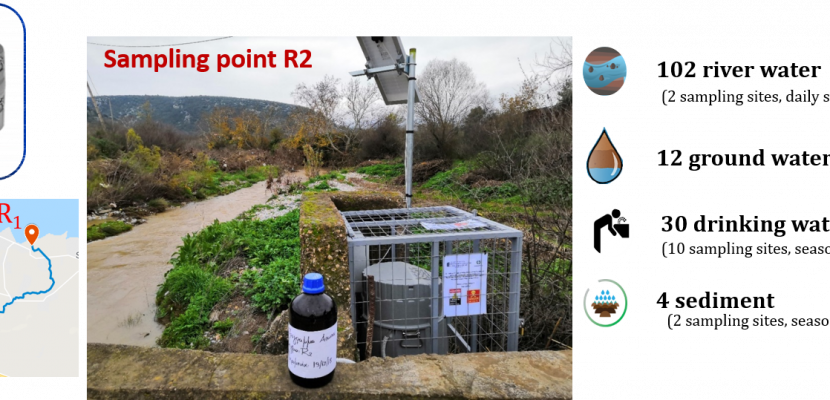Image

Monitoring of Asopos river basin: Chemical assessment of emerging contaminants
Published on 16 September 2020

Greece
Attiki
This is the good practice's implementation level. It can be national, regional or local.
About this good practice
The assessment of Asopos river basin was realized through the implementation of a well-structured sampling campaign. River water, sediments, groundwater and drinking water samples were collected on a seasonal basis over the course of a year for the determination of physicochemical parameters, priority pollutants and emerging contaminants. The analysis of daily river samples for one month enabled the detection of pollution spills and occurrence trends. All samples were screened with the in-house target database of the Laboratory of Analytical Chemistry of NKUA which currently includes more than 2,300 emerging contaminants from various classes, such as plant protection products, pharmaceuticals and industrial chemicals. Moreover, advanced chemometric tools were applied for the detection and identification of contaminants that presented specific pollution patterns during the sampling campaign, indicating potential industrial discharges into the river. Directives 98/83/EC, 2006/118/EC and 2013/39/EU were used for the quality assessment of physicochemical parameters, conventional and priority pollutants in water samples. In order to investigate the potential ecotoxicological threat of the detected emerging contaminants, a risk assessment study was applied, by comparing the detected concentration levels against Predicted No Effect Concentration (PNEC) values.
Expert opinion
Collecting water samples from European rivers and assessing their quality against the criteria set by relevant EU legislation with the purpose of identifying contaminants of emerging concern as well as illegal spills and industrial discharges is a practice in line with the spirit of the EU Zero Pollution Action Plan and the Chemical Strategy for Sustainability. River basin authorities and regional authorities in other Member States can be inspired by the monitoring of the Asopos river to step up their efforts against pollution of superficial water bodies.
Resources needed
Portable autosamplers were set up in the river sampling points for collecting representative 24-h composite samples, while state-of-the-art instrumental equipment was required for the determination of hundreds of emerging contaminants through wide-scope target and suspect screening methodologies.
Evidence of success
Thousands of emerging contaminants and their transformation products were screened for the first time at a national level in this study, revealing the presence of hundreds of organic compounds that may pose toxicological risk to the aquatic ecosystem. The monitoring results may also be used for chemical management purposes, since the Ministry of the Environment and Energy of Greece has already requested the final scientific report of the study from the Region of Attica.
Potential for learning or transfer
In order to apply an advanced monitoring study of emerging contaminants, state-of-the-art analytical equipment, expertise in Analytical Chemistry, High-Resolution Mass Spectrometry, and highly experienced researchers are required. The Laboratory of Analytical Chemistry of NKUA has strong collaboration with Universities and Institutes worldwide and the Public Sector of Greece. Prof. Thomaidis and his research team, are willing to train, collaborate and provide consultation on the advanced monitoring of environmental samples through target, suspect and non-target screening methodologies.
Further information
Website
Good practice owner
You can contact the good practice owner below for more detailed information.
Organisation
other

Greece
Attiki